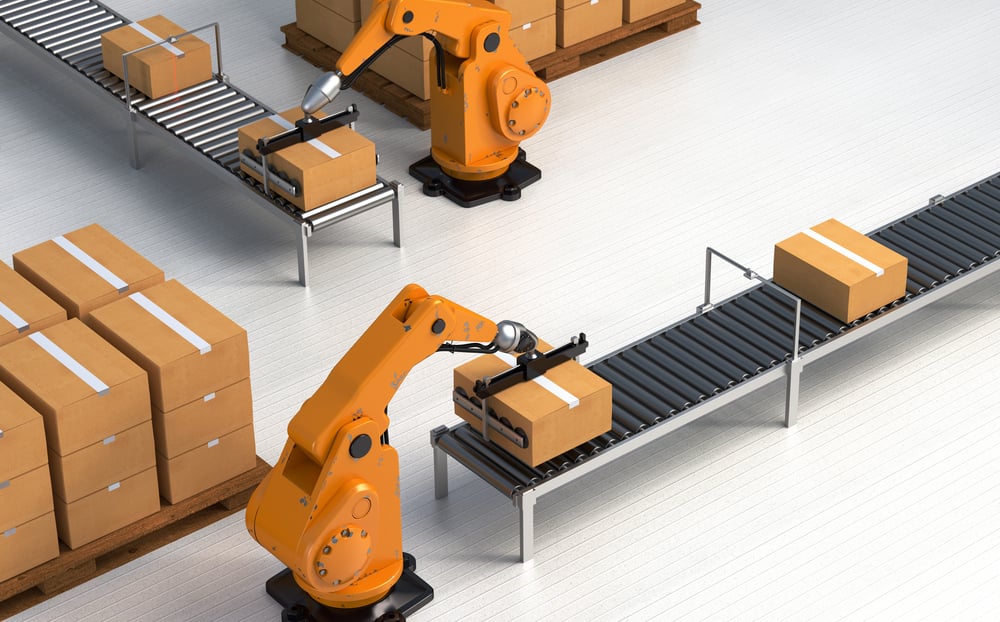Say Goodbye to Inefficient Material Handling: Discover Palletizing for Your Factory
8/1/20232 min read


If you've ever wondered how products neatly stack on pallets before being shipped out, you've stumbled upon the world of palletizing! This innovative process plays a crucial role in streamlining factory operations and optimizing efficiency. So, let's dive in and explore what palletizing is and how it can benefit your factory.
What is Palletizing?
Imagine you're packing your belongings for a move. You carefully arrange boxes on top of one another to save space and make it easier to transport. Palletizing works in a similar way, but on an industrial scale. It involves using machines to stack products, boxes, or containers onto pallets in a systematic and organized manner.
Palletizing machines, also known as palletizers, come in various types, such as robotic palletizers, conventional palletizers, and layer palletizers. These machines are programmed to handle different types of products and can stack them in specific configurations to maximize efficiency.
How Does Palletizing Help Your Factory?
1. Improved Efficiency and Speed: Palletizing significantly speeds up the process of preparing products for shipment. It can handle large quantities of items in a short time, reducing the need for manual labor and human intervention. This results in faster production and lower cycle times, ultimately improving your factory's overall efficiency.
2. Optimized Space Utilization: Palletizing machines are designed to stack products in an organized and compact manner. By maximizing the use of space on pallets, they reduce the need for excess storage and transportation, leading to cost savings and reduced waste.
3. Enhanced Safety: Heavy lifting and repetitive tasks can put workers at risk of injuries. Palletizing machines take over these tasks, minimizing the physical strain on employees and creating a safer working environment. Workers can then focus on more skilled and meaningful tasks, boosting their job satisfaction.
4. Consistency and Precision: Humans might get tired or make occasional errors, but machines work with consistent precision. Palletizers ensure that products are stacked uniformly, preventing damages during transportation and maintaining the quality of your goods.
5. Versatility and Adaptability: Palletizing machines can handle a wide range of products, from boxes and bags to drums and bottles. They can be easily programmed to accommodate various product sizes and stacking patterns, making them adaptable to the changing needs of your factory.
6. Cost Savings: Though investing in palletizing equipment may require an initial outlay, the long-term benefits far outweigh the costs. By streamlining processes, reducing labor requirements, and optimizing space utilization, palletizing can lead to significant cost savings over time.
7. Scalability and Growth: As your factory grows, the demand for your products will likely increase. Palletizing allows you to scale up production efficiently without facing bottlenecks. You can meet higher demand and expand your market reach, fostering business growth.
In summary, palletizing is a smart and efficient way of stacking products on pallets, making them ready for shipment. By implementing palletizing machines in your factory, you can enhance productivity, optimize space utilization, ensure product quality, and promote a safer work environment for your employees. The versatility and cost-saving benefits of palletizing make it a valuable investment for any factory looking to stay competitive and meet the demands of a growing market. So, if you want to boost your factory's efficiency and elevate your production process, palletizing is the way to go!
Contact Us for Free Consultation
Ready to take your business to the next level with automated machines and systems? Contact us today at +60 19 268 9812 (Mr. Rajaa) for a free consultation. Our experts will help you explore the best solutions tailored to your specific needs, ensuring a seamless integration of cutting-edge technologies into your production processes.
© 2025 T-Robot. All Rights Reserved.
